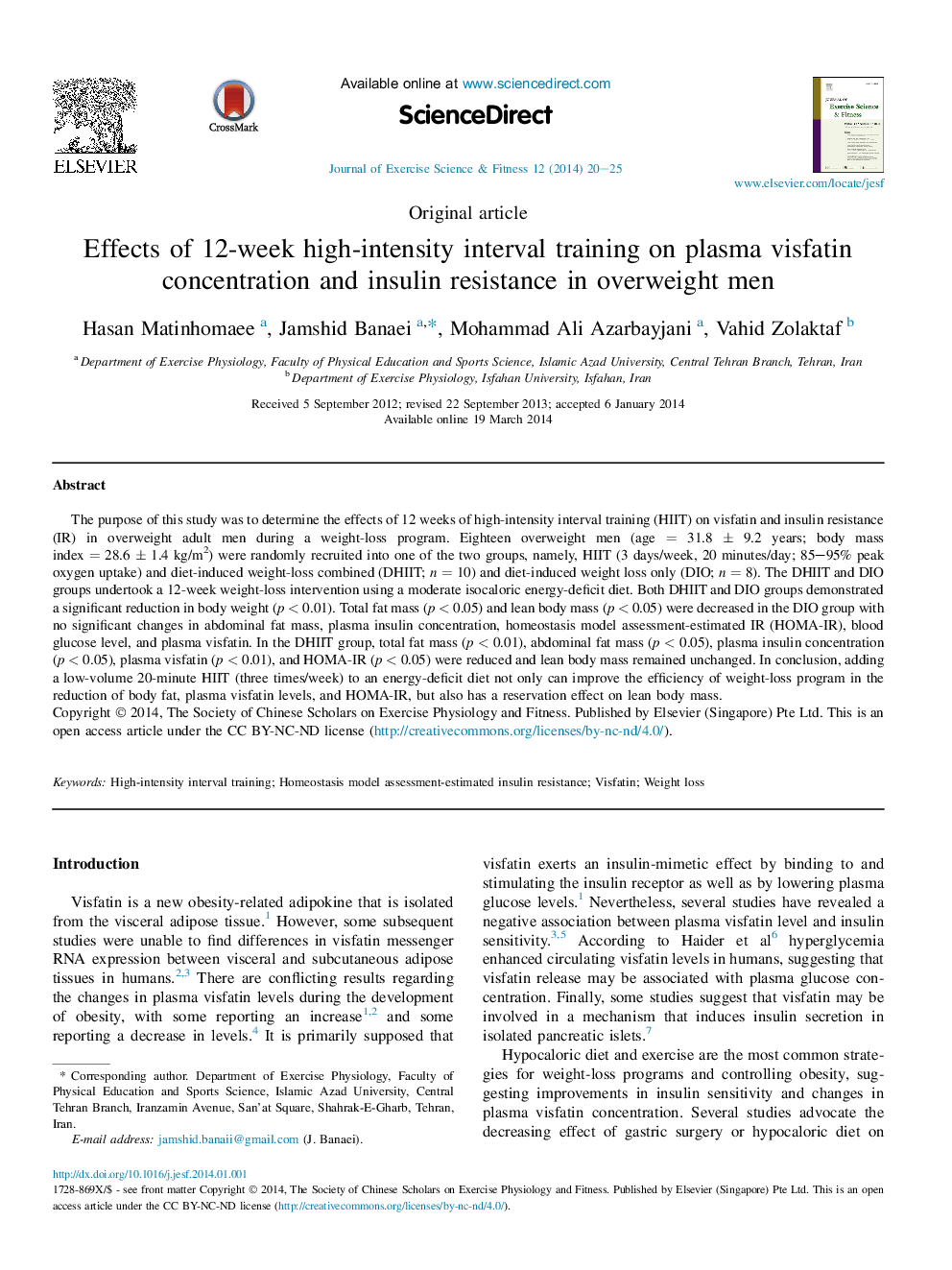| Article ID | Journal | Published Year | Pages | File Type |
|---|---|---|---|---|
| 2739657 | Journal of Exercise Science & Fitness | 2014 | 6 Pages |
The purpose of this study was to determine the effects of 12 weeks of high-intensity interval training (HIIT) on visfatin and insulin resistance (IR) in overweight adult men during a weight-loss program. Eighteen overweight men (age = 31.8 ± 9.2 years; body mass index = 28.6 ± 1.4 kg/m2) were randomly recruited into one of the two groups, namely, HIIT (3 days/week, 20 minutes/day; 85–95% peak oxygen uptake) and diet-induced weight-loss combined (DHIIT; n = 10) and diet-induced weight loss only (DIO; n = 8). The DHIIT and DIO groups undertook a 12-week weight-loss intervention using a moderate isocaloric energy-deficit diet. Both DHIIT and DIO groups demonstrated a significant reduction in body weight (p < 0.01). Total fat mass (p < 0.05) and lean body mass (p < 0.05) were decreased in the DIO group with no significant changes in abdominal fat mass, plasma insulin concentration, homeostasis model assessment-estimated IR (HOMA-IR), blood glucose level, and plasma visfatin. In the DHIIT group, total fat mass (p < 0.01), abdominal fat mass (p < 0.05), plasma insulin concentration (p < 0.05), plasma visfatin (p < 0.01), and HOMA-IR (p < 0.05) were reduced and lean body mass remained unchanged. In conclusion, adding a low-volume 20-minute HIIT (three times/week) to an energy-deficit diet not only can improve the efficiency of weight-loss program in the reduction of body fat, plasma visfatin levels, and HOMA-IR, but also has a reservation effect on lean body mass.
